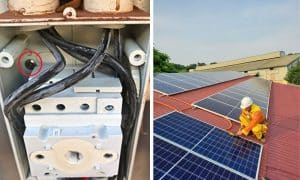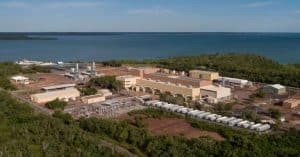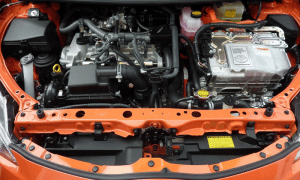Solar panels in the Northern Territory are gaining significant traction, with around 15% of all households now equipped with solar panels, totalling over 10,000 installations. Many Territorians are incorporating battery storage into their systems, maximizing their solar power usage by storing energy generated during the day for use at night or on cloudy days.
As the demand for solar panels and energy solutions grows, Energy Matters provides free quotes for solar installation in NT. Homeowners can connect with reliable solar installers in the region, ensuring they find the best options for their energy needs and budgets. Investing in solar panels in the Northern Territory not only enhances energy independence but also supports a cleaner environment. For those interested in exploring solar power solutions further, now is a great time to consider the benefits of solar panel installation in NT.
Get Solar Quotes from up to 3 Local Installers in NT
Step 1: Fill out our straightforward quote form to get connected with trustworthy solar installers in the Northern Territory.
Step 2: You will hear from up to three local installers via phone or email, providing you with detailed information and their best deals.
Step 3: Review quotes at no cost and with no obligations—choose the option that best aligns with your needs and budget.

Read more about solar panels and other renewable energy technology in Darwin.
On this page
Are Solar Panels a Smart Financial Move? Discover Your Potential Savings
Solar panels are a smart investment for Northern Territory residents in 2024. Homeowners can save an average of $900 to $1,300 annually on their energy bills by transitioning from traditional power sources to solar, depending on the system size and household consumption. The Northern Territory government also offers rebates and initiatives to encourage solar adoption, such as the Small-scale Renewable Energy Scheme (SRES) and feed-in tariffs, which further reduce the upfront cost of solar systems.
With solar technology becoming more affordable and accessible, many Northern Territory residents are taking advantage of these incentives to reduce their energy expenses. Whether you’re in Darwin or regional areas, there are plenty of excellent solar deals available. To find the best options for your home, get free solar quotes today at Energy Matters.
How much do solar panels cost in NT?
The cost of installing solar panels in the Northern Territory varies depending on system size, installation complexity, and brand choice. As of October 2024, homeowners in NT can expect to pay around $6,780 for a 4kW system, $7,600 for a 5kW system, $9,320 for a 6kW system, $10,060 for a 7kW system, and $13,060 for a 10kW system. These prices include standard installation, the STC discount, and GST. Larger systems generally provide greater long-term savings, especially for households with higher energy consumption.
The chart below outlines the typical costs for various solar system sizes in the NT, giving a clear understanding of current market rates.
Figures are accurate as of October 2024. Source: Solar Choice – October 2024 solar price index. Your solar system price will vary according to your location, installer, products, and any deals or discounts provided by your retailer. All prices are to be used as a guide.
“I discovered EM to be a business with expertise in its field. The procedure was completed quickly and effectively. They work with great companies. The entire project, from consultation to completion, went without a hitch. Our solar system is currently installed and performing well.”
Adele
“Everything from the first phone call to getting installed was so professional. Communication was excellent, the installers were on time and everything was left neat and clean. I’d recommend Energy Matters to anyone looking for solar.”
Ben
“I went through Energy Matters on a friend’s recommendation. They put me onto the best installers in my area. They helped me a lot with the whole vic rebate thing, which was very confusing before speaking with the experts. thanks, very happy.”
Dave
NT solar panels: An investment with great returns
For a 6.6 kW solar system in the Northern Territory, homeowners can expect to save between $1,100 and $1,500 annually, depending on their electricity usage and whether they include battery storage. This estimate is based on the current feed-in tariff (FiT), which varies from 8 to 13 cents per kilowatt-hour (kWh). For larger systems, such as a 10 kW solar setup, annual savings can reach up to $2,500, especially for households with higher self-consumption rates or those on time-of-use tariffs. These savings highlight the financial benefits of investing in solar energy for homes across the Northern Territory.
By taking advantage of government incentives and the decreasing costs of solar technology, Northern Territory residents can secure a smart investment in their energy future.
NT rebates and incentives
Northern Territory residents and businesses can benefit from several state and federal incentives and rebates, including:
- Small-scale Technology Certificates (for residential and small to medium businesses)
- Feed-in Tariffs
- Home and Business Battery Scheme
- Electric Vehicle (EV) Charger Grants Scheme
Discover more about these programs and initiatives through the button below.
Energy efficient products and upgrades
Upgrade your outdated appliances to the latest energy-efficient technology to significantly reduce your energy costs. Older systems, such as hot water heaters, heating and cooling units, and other household devices, may be costing you thousands each year. Replacing them can reduce your environmental impact and improve your home’s efficiency.
In the Northern Territory, installing a solar hot water system can save households between $300 and $800 annually on energy bills, depending on hot water usage and the type of system. These systems use solar energy to heat water, reducing reliance on traditional electricity or gas sources, and making them both cost-effective and eco-friendly.
Northern Territory residents can access various incentives, including support programs aimed at helping households upgrade to energy-efficient products, especially those facing financial hardship.
NT solar batteries: The future of renewable energy
The Northern Territory is seeing a growing trend in solar energy, with 18% of all new solar systems installed in 2024 now including battery storage. By adding a battery to your solar setup, you can enjoy energy savings around the clock. Combining solar panels with batteries not only enhances your home’s value but also significantly cuts energy bills and boosts your independence from the grid.
Batteries are seen as the future of energy, allowing you to store solar power generated during the day for use at night or on overcast days when sunlight is limited. Incorporating a battery with your residential solar system can potentially double your self-consumption of the electricity you generate.
To maximise the benefits of your battery, consider joining a Virtual Power Plant (VPP). A VPP can shorten your battery investment’s payback period and provide extra income by allowing you to sell stored energy back to the grid during peak demand. To find out more about the Origin Loop VPP, visit our page.
Australia's EV Revolution: Ready to Make the Switch?
Did you know that approximately 6.5% of new vehicle sales in the Northern Territory are electric vehicles (EVs)? Installing a home battery lets you charge your EV overnight and sell excess stored electricity back to the grid. This gives you the flexibility to choose what suits your lifestyle and take advantage of the Northern Territory’s current feed-in tariff.
With residential EV charging, your home becomes a personal charging station, reducing your vehicle costs and adding convenience. The growing EV market in the Northern Territory highlights a shift toward sustainable transport options. Now is the perfect time to explore how solar and battery solutions can increase your energy independence while supporting the move to electric vehicles.
Making solar simple
We get it—potential challenges can make some folks hesitate when it comes to exploring solar energy. At Energy Matters, our partners excel at crafting custom solutions tailored to your needs, offering support every step of the way. Whether you’re in the Northern Territory or elsewhere, you can easily request up to three quotes from trusted local installers. They’ll collaborate with you to understand your requirements and address any questions about making the switch to solar.
Take that first step toward a greener future and explore your solar options today!
NT solar and battery FAQs
Solar panels reduce electricity bills, increase energy independence, and lower environmental impact. They also enhance property value and contribute to the Northern Territory’s renewable energy goals.
Homeowners can save between $900 and $1,500 annually, depending on system size and household consumption. Adding a battery can further reduce costs by storing excess energy for later use.
Yes, the Northern Territory offers incentives like the Home and Businesses and Battery Scheme (HBBS), which provides grants of up to $5,000 for eligible homeowners and businesses to install solar and battery storage systems.
Absolutely! Adding a battery allows you to store excess solar energy for use at night or during low sunlight periods, increasing your self-consumption and reducing reliance on the grid.
The payback period typically ranges from 5 to 7 years, depending on system size, energy usage, and available incentives. After this period, the savings on electricity bills usually exceed the initial investment.
Solar batteries store excess energy generated during the day for use at night or during overcast days. They enhance energy independence, reduce electricity bills, and provide backup power during outages.
A VPP is a network of home solar and battery systems that supply power to the grid during peak times. Joining a VPP can shorten your battery’s payback period and provide extra income by selling stored energy back to the grid.
Consider factors like capacity, efficiency, lifespan, warranty, and compatibility with your existing solar system. Choose a battery that meets your energy needs and budget.
NT news and updates
Keep up to date with the latest renewable news and updates from the Northen Territory.












































